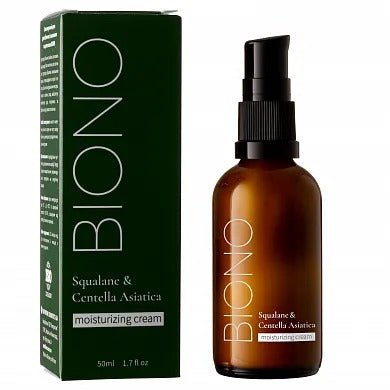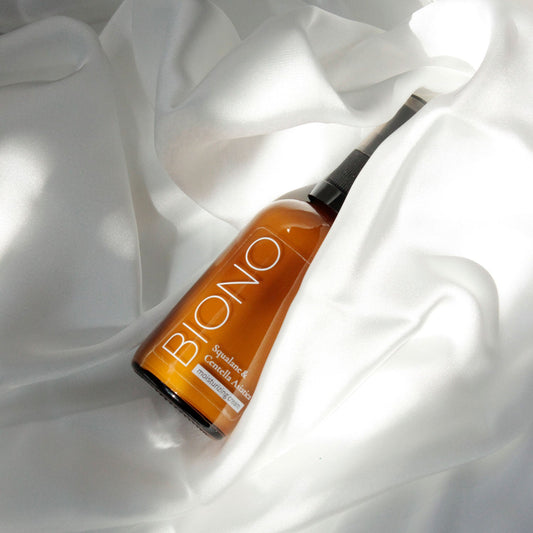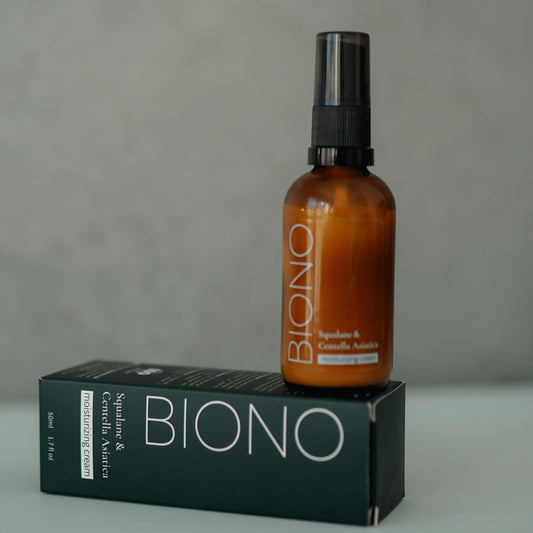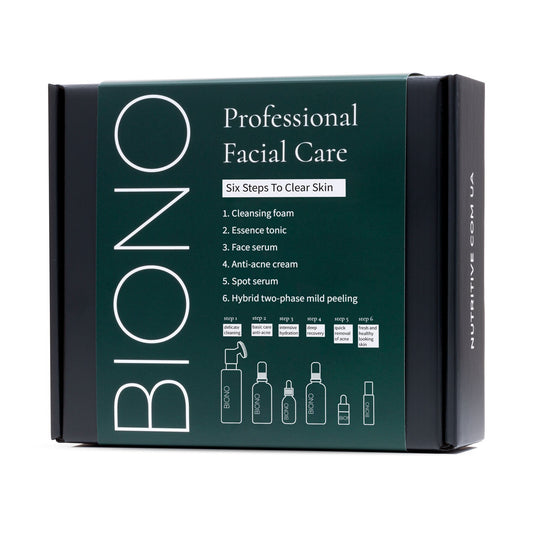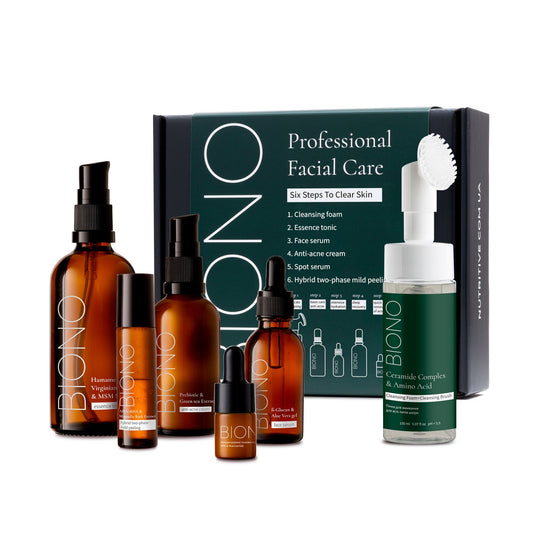
Your skin will say "thank you": how to choose the right moisturizing cosmetics
Moisturized skin is not just a matter of beauty, but above all health. In today's world, where climatic conditions, heating, air conditioning and stress constantly affect our epidermis, the right cosmetics for moisturizing the skin become a real salvation. Loss of moisture leads to premature aging, wrinkles, peeling and discomfort. Therefore, it is important to understand how moisturizers work and what exactly your skin needs.
Why moisturizing the skin is the basis of care
Many people mistakenly believe that moisturizing cosmetics are only needed for dry skin. In fact, every skin type needs hydration, as it is a basic need of our epidermis. Even oily skin can suffer from dehydration when there is a lack of water in the cells, although the sebaceous glands are working actively.
Facial moisturizers perform several critical functions. They create a protective barrier that prevents transepidermal moisture loss, replenishes cells with water, and maintains optimal hydration. Without adequate hydration, skin loses elasticity, becomes dull, and is prone to irritation.

How moisturizers work: the science in simple terms
Professional moisturizing cosmetics use three main mechanisms of action. The first is occlusion, when the product creates a film on the skin surface that prevents moisture from evaporating. The second is humication, when active ingredients attract water from the air or deeper layers of the skin. The third is emolliation, when substances fill the spaces between cells, making the skin smooth.
The most effective moisturizers combine all three mechanisms. Hyaluronic acid, glycerin, and urea work as humectants — attracting and holding water molecules. Oils, waxes, and silicones act as occlusive agents, creating a protective layer. Ceramides and fatty acids act as emollients, restoring the lipid barrier.
It is important to understand that facial moisturizers should be selected taking into account not only skin type, but also climatic conditions. In the cold season, thicker textures with occlusive components are needed, in the summer - light gel formulas with humectants.
Skin types and their specific hydration needs
Dry skin needs intensive nourishment and lipid-rich textures. Creams with shea butter, jojoba, squalane and a high ceramide content are suitable for it. Cosmetics for very dry skin should contain occlusive ingredients that create a strong protective barrier and prevent moisture loss throughout the day.
Oily skin also needs hydration, but of a different nature. It needs light gel or fluid textures that do not clog pores. The ideal choice is cosmetics with hyaluronic acid, nicotinamide and mattifying ingredients. It is important to choose non-comedogenic formulas marked "oil-free".
Combination skin requires a balanced approach. The T-zone needs light hydration without a greasy shine, and the cheeks need more nourishing textures. The optimal solution would be moisturizing cosmetics with adaptive formulas or using different products for different areas of the face.

Key ingredients in moisturizing cosmetics
Modern cosmetics for moisturizing the skin are based on scientifically proven active ingredients. Understanding their action will help you make an informed choice:
- Hyaluronic acid - capable of holding a thousand times more water than it weighs, works at different levels of the epidermis
- Glycerin is a classic humectant, attracting moisture from the air and deeper layers of the skin.
- Ceramides — restore the lipid barrier, prevent transepidermal moisture loss
- Squalane is a biomimetic ingredient that easily penetrates the skin and provides long-lasting hydration.
- Panthenol — soothes, moisturizes and accelerates skin regeneration
Natural moisturizing cosmetics often contain extracts of aloe vera, cucumber, green tea, and algae. These ingredients not only saturate the skin with moisture, but also provide additional care - soothing, nourishing with antioxidants, and improving microcirculation.
It is important to pay attention to the concentration of active ingredients in the composition. Cosmetics for intensive hydration should contain hyaluronic acid in a concentration of 1% or more, glycerin - from 5%, and ceramides should be in the first third of the INCI list.
Day and night care: the difference in the approach to hydration
Daytime moisturizers have a protective function. They have a lighter texture, are quickly absorbed, and create a base for makeup. Day creams often contain SPF filters, antioxidants, and mattifying ingredients. Their task is to protect the skin from external aggressors and maintain a comfortable level of hydration throughout the day.
Night cosmetics work differently. During sleep, regeneration processes are activated, so night products have a richer formula. They contain restorative components, retinols, peptides and higher concentrations of active ingredients. Night moisturizers usually have a thicker texture, because they do not need to be absorbed quickly.
Professionals recommend not to neglect any of the stages of care. Cosmetics for moisturizing facial skin work most effectively in a complex - day and night cream complement each other, providing continuous care. In the summer, you can use lighter textures even at night, and in the winter - strengthen night care with more nourishing products.
Serums and essences: concentrated skin hydration
Serums for hydration are highly concentrated products with a light texture that penetrate into the deeper layers of the epidermis. They are applied under the cream and significantly enhance its effect. Cosmetics in the format of serums contain up to 70% of active ingredients, while creams usually contain 10-20%.
Hyaluronic acid serums are especially effective for instant hydration. They fill the skin with moisture from the inside, smoothing out fine lines and giving the face a fresh, radiant look. It is important to apply such products to damp skin - then hyaluronic acid will be most effective in attracting and retaining water.
Essences are an Asian innovation in the world of moisturizing cosmetics. They have a watery texture and are applied immediately after toning. Essences prepare the skin for the next steps of care, increase the penetration of active ingredients and provide an additional layer of hydration. This is especially important for dehydrated and tired skin.
Masks for intensive hydration: when your skin needs SOS help
Sheet masks have become a real hit due to their quick and noticeable effect. Cosmetics in the form of sheet masks are impregnated with concentrated essence, which intensively saturates the skin with moisture in 15-20 minutes. The fabric base creates an occlusive effect, which enhances the penetration of active ingredients.
Creamy moisturizing masks are suitable for regular use 1-2 times a week. They have a rich texture and stay on the skin longer - from 15 to 30 minutes. Such masks are especially effective for dry and dehydrated skin, as they provide deep nourishment and restoration.
Night masks are an innovation that allows you to continue your skincare routine while you sleep. Unlike regular masks, they don't need to be washed off - they work all night long, providing a prolonged moisturizing effect. This type of cosmetics is ideal for very dry skin or for use during the heating season.
Body Hydration: Don't Forget About the Skin Beyond Your Face
Body skin also needs careful care and hydration. Cosmetics for moisturizing the body have their own characteristics - they are usually richer textures with emollients, because the skin of the body is denser and less sensitive than the skin of the face.
Body lotions have a light texture, are quickly absorbed and are suitable for daily use. They are ideal for normal skin or use in the warm season. Body creams are thicker, contain a higher concentration of oils and are suitable for dry skin. Body oils provide the most intense hydration and nutrition, especially useful for very dry areas - knees, elbows, heels.
It is important to apply moisturizing cosmetics to damp skin immediately after a shower - this way the active ingredients penetrate better and the moisturizing effect is enhanced. Particular attention should be paid to areas prone to dryness: hands, feet, elbows need extra care, especially in winter.

Seasonality in care: how to adapt hydration to weather conditions
Winter requires increased hydration. Indoor heating, frost and wind outside actively dry out the skin. Cosmetics for moisturizing the skin in winter should be richer, with occlusive components and a formula rich in lipids. It is important to use additional protection in the form of cold creams.
In summer, skin needs change. High temperatures and active sun can cause dehydration, so moisturizing remains relevant. However, textures should be lighter - gels, fluids, emulsions with a high water content. Cosmetics with SPF protection become mandatory, because ultraviolet light destroys hyaluronic acid in the skin.
Transitional seasons — spring and autumn — are the time when the skin adapts to new conditions. This is the ideal period for revising your makeup bag and selecting new products. In autumn, you should gradually switch to more nourishing textures, and in spring, make care easier. Moisturizing cosmetics during these periods can be combined: a light day cream and a richer night cream.
Common mistakes in moisturizing the skin
Overhydration is a real problem that occurs when you overuse moisturizers. When you apply too much to your skin, it disrupts its natural ability to self-regulate. The result is clogged pores, blackheads, and a dull appearance. It’s important to stick to the “less is more” principle and choose high-quality, concentrated formulas.
Ignoring your skin type leads to ineffective care. For example, using thick creams on oily skin can provoke the appearance of comedones and inflammation. And light gels on dry skin will not provide sufficient protection. Moisturizing cosmetics should meet the real needs of your skin, not trends or advertising.
Another common mistake is applying moisturizer to unclean skin. Even the most expensive cosmetics will not work effectively if there is makeup residue, sebum, or dirt on the face. The correct care sequence is critically important:
- Cleansing (hydrophilic oil or micellar water)
- Wash (gel or foam)
- Toning
- Serum or essence
- Moisturizing cream
- SPF protection (daytime)
Professional cosmetics vs mass market: what's the difference?
Professional moisturizing cosmetics are distinguished primarily by the concentration of active ingredients. Premium brands invest in research and use innovative technologies to deliver components to the deeper layers of the skin. Formulas are developed taking into account the synergy of ingredients, when the components enhance each other's effects.
Mass market cosmetics can be effective, especially if you read the ingredients correctly. Many drugstore brands offer decent formulas with hyaluronic acid, glycerin, and other proven ingredients at an affordable price. It is important to pay attention to the first third of the INCI list - this is where the active ingredients should be, not just water and emulsifiers.
The choice depends on your budget and individual needs. For basic daily care, high-quality mass-market products are quite suitable. But to solve specific problems - for example, pronounced signs of aging or very dehydrated skin - it is worth investing in professional cosmetics with proven effectiveness and clinical research.
How to apply moisturizing cosmetics correctly
The application technique affects the effectiveness of care no less than the product itself. Moisturizing cosmetics are applied along massage lines - from the center of the face to the periphery, from the bottom up. This stimulates lymphatic drainage, improves blood circulation and prevents skin stretching. Particular care should be taken in the area around the eyes - the skin is the thinnest here.
The amount of product also matters. A pea-sized amount is enough for the face - this is about 0.5-1 gram of cream. Excess will not increase the effectiveness, but will only create a film on the surface. It is better to apply a thin layer and let it absorb completely than to spread a thick layer that will remain sticky.
The temperature of the product is also important. A cream warmed in the palms penetrates the skin better and is distributed more evenly. Take a small amount of cosmetics, rub it between your palms and gently pat it into the skin. This technique ensures maximum penetration of the active ingredients.
Additional care: moisturizing efficiency boosters
Thermal water is a simple but effective way to add moisture throughout the day. It contains minerals that soothe and tone the skin, maintaining its hydrobalance. Cosmetics in spray format are convenient for use in the office, after sports or while traveling. Spray thermal water from a distance of 20-30 cm and blot the excess with a napkin.
Hydrogel eye patches provide intensive hydration to the delicate area in 15-20 minutes. They contain concentrated serums and create an occlusive effect. Use the patches before important events or after a sleepless night to quickly restore a fresh look.
Adding a few drops of cosmetic oil to your day or night cream enhances its nourishing properties. This is especially important for dry skin or in the cold season. Jojoba, rosehip or argan oils blend perfectly with moisturizing cosmetics without breaking their formula.
Hydration from the inside out: a comprehensive approach to skin health
No skin moisturizing cosmetics will be 100% effective if the body is dehydrated. Water is the basis of life, and for healthy skin you need to drink at least 1.5-2 liters of clean water per day. This ensures the delivery of nutrients to the cells and the elimination of toxins.
Nutrition affects the condition of the skin no less than external care. Foods rich in omega-3 fatty acids (fish, nuts, avocados) support the skin's lipid barrier. Vitamin E acts as an antioxidant and protects cells from damage. Zinc and selenium are necessary for tissue regeneration.
A humidifier is not a luxury, but a necessity, especially in winter. The optimal humidity in a room should be 40-60%. When the air is dry, the skin loses moisture faster, and even the best moisturizing cosmetics do not do their job completely. Using a humidifier significantly increases the effectiveness of care.
In summary: your path to perfectly hydrated skin
The right cosmetics for moisturizing the skin are an investment in health and beauty for many years to come. Moisturized skin looks younger, glows with health, and is less prone to wrinkles. The main thing is to find an individual approach that takes into account your skin type, seasonality, lifestyle, and special needs.
Don't be afraid to experiment with different textures and formulas, but always read the ingredients and listen to your skin. High-quality cosmetics don't work instantly — give the product time, at least 2-4 weeks of regular use. A comprehensive approach that combines proper external care, sufficient water consumption, and a healthy diet will give the best results. Remember: every skin is unique, and what suits others may not suit you — listen to your skin and be healthy!



